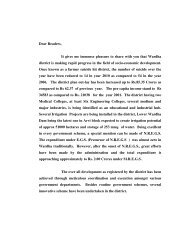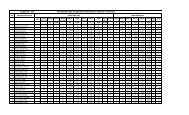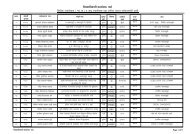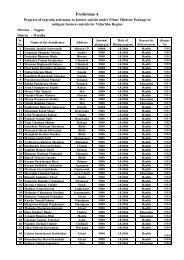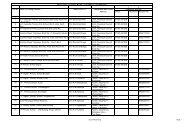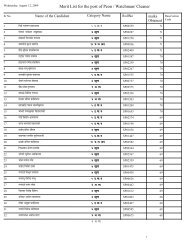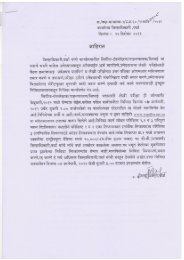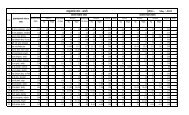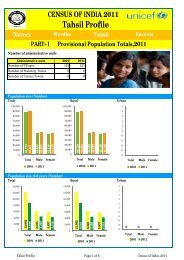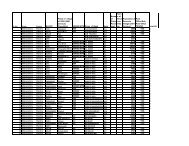Create successful ePaper yourself
Turn your PDF publications into a flip-book with our unique Google optimized e-Paper software.
• Vehicles and trailers needed for transporting and supporting each type of animal<br />
should be available along with experienced handlers and drivers. It is best to allow<br />
animals a chance to become accustomed to vehicular travel so they are less<br />
frightened and easier to move.<br />
• In case evacuation is not possible, animal owners must decide whether to move<br />
large animals to shelter or turn them outside. This decision should be based on the<br />
disaster type, quality and location of shelter, and the risks of turning them outside.<br />
• All animals should have some form of identification.<br />
Wildlife in disaster<br />
Disaster and life threatening situations will exacerbate the unpredictable nature of<br />
wild animals. To protect yourself and your household, learn how to deal with wildlife.<br />
• Be cautious approaching wild animals during emergency situations. Do not<br />
corner them. Wild animals will likely feel threatened and may endanger<br />
themselves by dashing off into floodwaters, fire, etc.<br />
• If wild animals are trapped or no natural food source is available, you can leave<br />
food appropriate to individual animals (i.e., animals could become trapped on an<br />
"island" after seeking high ground as floodwaters rise).<br />
• Wild animals such as snakes, opossums, and raccoons often seek refuge from<br />
floodwaters on upper levels of homes and have been known to remain after<br />
water recedes. If you encounter animals in this situation, open a window or<br />
other escape route and the animal will likely leave on its own. Do not attempt to<br />
capture or handle the animal. Should the animal stay, call City animal control<br />
office (forest dept.) or animal care NGOs.<br />
• If you see an injured or stranded animal, do not approach or attempt to<br />
help. Call your local animal control office (forest dept.) or animal care NGOs.<br />
• Animal carcasses can present serious health risks. Contact your local disaster<br />
management office or health department for specific help and instructions.<br />
Animals after disaster<br />
Wild or stray domestic animals can pose a danger during or after many types of<br />
disaster. Remember, most animals are disoriented and displaced, too. Do not corner an<br />
animal. If an animal must be removed, contact your local animal control (forest dept.)<br />
authorities.<br />
If any animal bites you, seek immediate medical attention. If a snake bites you, try<br />
to accurately identify the type of snake so that, if poisonous, the correct anti-venom can be<br />
administered. Do not cut the wound or attempt to suck the venom out.<br />
Certain animals may carry rabies. Although the virus is rare, care should be taken<br />
to avoid contact with stray animals and rodents. Health departments can provide<br />
information on the types of animals that carry rabies in your area.<br />
Rats may also be a problem during and after many types of disaster. Be sure to<br />
secure all food supplies and contact your local authorities to remove any animal carcasses<br />
in the vicinity.<br />
66



